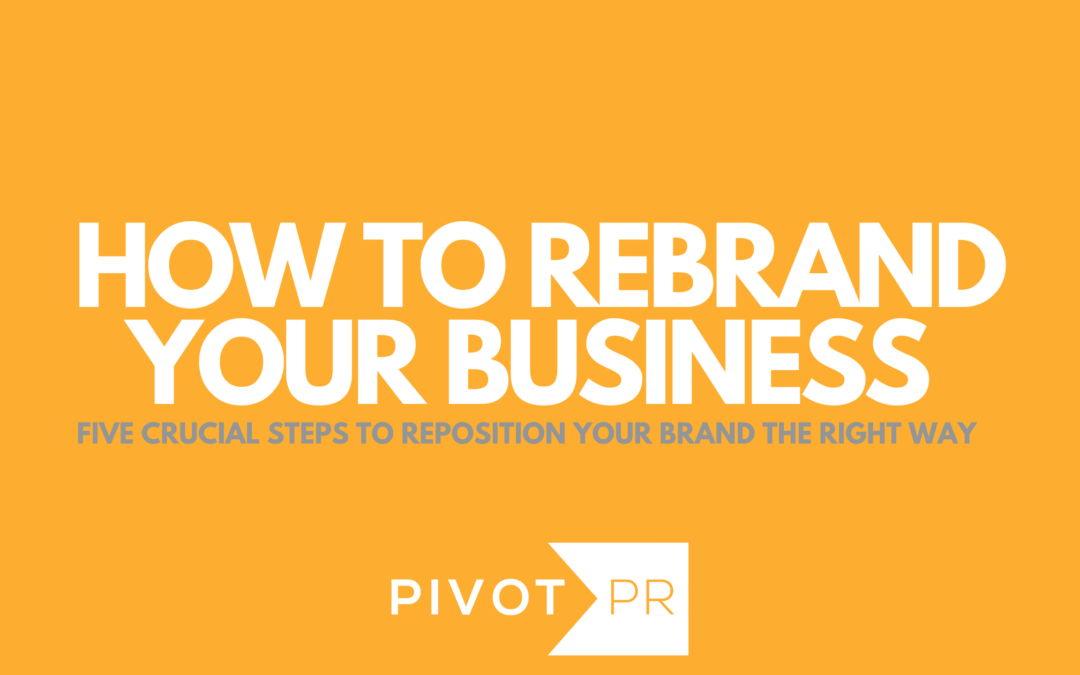A rebrand is a marketing strategy implemented by any organization looking to change or update its brand identity in a meaningful way. It is often a response to some disconnect or error in how an organization is currently communicating with its target audience. There are numerous reasons why companies choose to undergo a rebrand, but most often it is to:
- reflect a change or expansion in the business’ services or products
- signify a merger or acquisition
- differentiate the company from industry competitors
- improve brand awareness and stay relevant in the eyes of the public
- realign the company’s image with its values and identity
- reconnect with an existing audience, or reach a new one
In all of these examples, the goal of a rebrand is to change an organization’s identity in the minds of customers, employees and other stakeholders—hopefully, for the better. It can be a large undertaking, but when done right, a rebrand can enhance a company’s relationship with customers, the media and even itself. Read below for our five-step process to executing a successful rebrand.
Five-Step Process to Execute a Rebrand
- Team Branding Session
The first step in a successful rebrand is to facilitate an interactive, thought-provoking discussion with your team about why your organization needs a rebrand, and what you want the rebrand to achieve long-term. A great way to answer these questions is to start with the end in mind. What do you want your customer experience to look like in five years? Would you like to expand the types of products or services you offer, or who you sell them to? How do you see your audience evolving over time? - Competitive Analysis
Conducting a comprehensive analysis of local, regional and even national competitors in your industry is an effective way of better understanding which branding and communications trends resonate the most with your target audience—and which miss the mark. It also gives your organization an idea of how it can differentiate itself from the competition, and provides clarity on who is, or is not, buying from you. Through this research, you will likely make observations about your audience or your industry that contradicts your preexisting beliefs about them; These discoveries are both important and beneficial in determining how your organization wants to reposition itself in the future. - New Brand Formulation
Determining what is and isn’t “working” for your organization is half the battle—next, you must use what you’ve learned through your research and analysis to develop something altogether new. While your brand encompasses your reputation and visibility, your brand identity is the visual shorthand that can make you recognizable and memorable. So, updating your name, logo, colors, typography and imagery are some of many great ways to alter public perception of your organization. To make brand implementation easier later on (see Step #4), compile these visual elements into a style guide that can be easily referenced by employees and the media. Feel free to brainstorm a variety of creative options—just make sure to leave time for feedback and revisions too. - Brand Implementation
Once you have an idea of what the “new you” looks like and sounds like, you must update any digital or print collateral to reflect these changes. Use the directions, applications and examples provided in your company’s style guide to ensure that your brand is implemented consistently across all marketing materials, including pitch decks, proposal templates, and one-sheet flyers. - Internal/External Announcement
Finally, it’s time to announce your company’s rebrand to the public. With help from your new style guide, develop consistent, clear messaging and content that explains what and why your organization decided to undergo a rebrand. This may include press releases or a messaging document. Then, share this collateral with relevant stakeholders, such as customers and the media.
